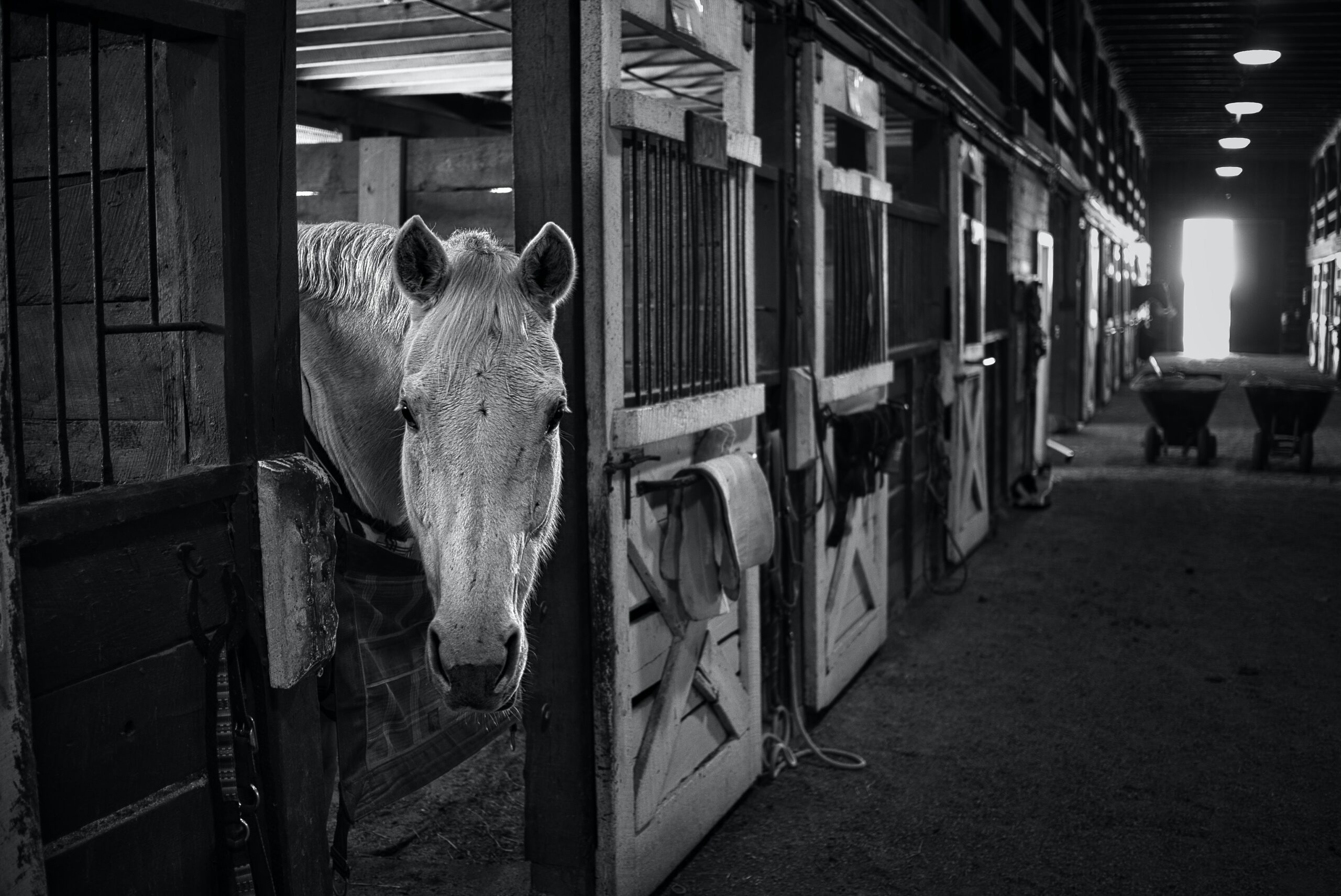Bethany Baxley is a PhD student at Texas Tech University. The focus of her research is the welfare of horses working in Equine Assisted Services.
Horses are often confined to a stall for a variety of reasons. Providing enrichment can improve their well-being while in a stall as well as reduce stereotypic behaviors. Find out how to provide low-cost environmental challenges and enrichment.
According to a survey conducted by Rankins and others (2021) found that 33% of PATH center respondents provided anywhere from 5-12 hours of turnout. While best practices for equine management suggest avoiding confinement, this is not practical for all centers. If your horses are kept in stalls for efficiency of time between services or due to a lack of space, enrichment can provide cognitive challenge and sensory stimulation, and overall improve welfare (Prescott, 2021). Enrichment is an item that fulfills a behavioral need. Good enrichment should allow horses to express natural behaviors, be valuable overtime and not rely on novelty. Most studies investigating equine enrichment focus on forage delivery. Simply placing hay in a fine mesh haynet was shown to decrease incidence of stereotypic behaviors, such as weaving (Waran et al., 2010). There are several slow feeder options commercially available, such as a Jolly Hay Ball feeder, Kong equine toy, Jolly Pets Amazing Graze, Shires Horse Carrot Ball, or Likit Snak-A-Ball.
For those on a budget, there are also plenty of DIY options for budget friendly enrichment. One such option is taking an old cardboard box and filling it with hay and other treats (e.g., carrots) which allows the horse to forage and sniff its way through the box. Similarly, adding horse safe items to feed pans or buckets can slow down grain consumption and provide sensory challenges. Place a movable barrier in the feed bucket such as large rocks that are too big for your horse to accidentally consume. Another way to provide enrichment is to offer a variety of forage in different locations which encourages natural foraging and exploration, as well as allows the horse to have a choice and control in their environment. Other non-food related enrichment ideas are to place a broom head or scratch mat in the stall so they can rub against it.
Social interactions can also improve the welfare of horses in a stall. Allow horses to see and interact with neighbors when possible. Be sure if horses are able to physically interact that they are suitable company, because aggressive behavior from a neighboring horse may increase stress instead of reducing it. Ultimately, there are plenty of ways to add enrichment to horses that are stalled to improve their welfare without breaking the bank, you just have to ‘think outside the box’.
References
Prescott, K. (2021). Optimizing the welfare of equids on box rest: Thinking outside the box. UK-Vet Equine, 5(3), 122–128.
Rankins, E. M., Wickens, C. L., McKeever, K. H., & Malinowski, K. (2021). A survey of horse selection, longevity, and retirement in equine-assisted services in the United States. Animals, 11(8), 2333. https://doi.org/10.3390/ani11082333
Waran, N., Cooper, J., & McGreevy, P. (2010). Stereotypic Behaviour in the Stabled Horse: Causes, Effects and Prevention Without Compromising Horse Welfare. In The welfare of horses. essay, Kluwer Academic Publishers.

